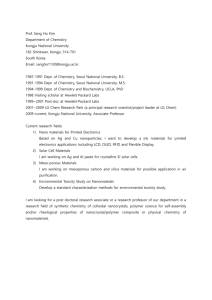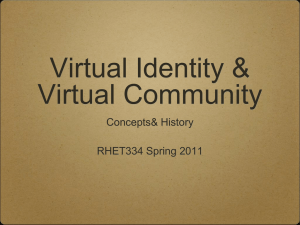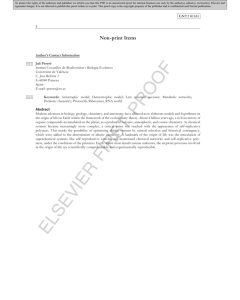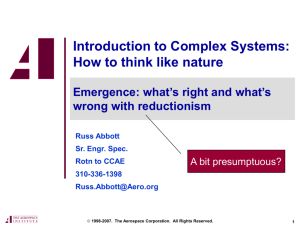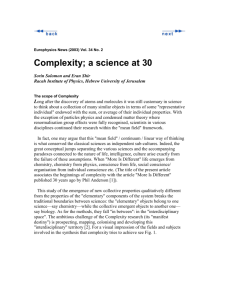Title: Dynamic Self-Assembly, Complexity, and Emergence
advertisement
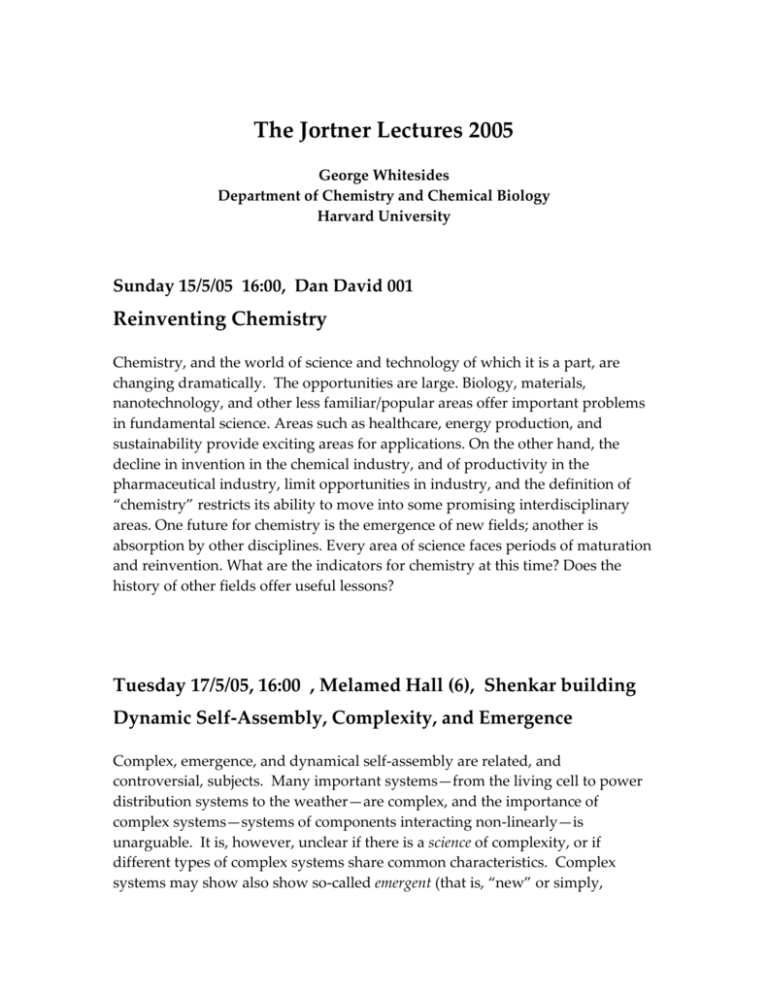
The Jortner Lectures 2005 George Whitesides Department of Chemistry and Chemical Biology Harvard University Sunday 15/5/05 16:00, Dan David 001 Reinventing Chemistry Chemistry, and the world of science and technology of which it is a part, are changing dramatically. The opportunities are large. Biology, materials, nanotechnology, and other less familiar/popular areas offer important problems in fundamental science. Areas such as healthcare, energy production, and sustainability provide exciting areas for applications. On the other hand, the decline in invention in the chemical industry, and of productivity in the pharmaceutical industry, limit opportunities in industry, and the definition of “chemistry” restricts its ability to move into some promising interdisciplinary areas. One future for chemistry is the emergence of new fields; another is absorption by other disciplines. Every area of science faces periods of maturation and reinvention. What are the indicators for chemistry at this time? Does the history of other fields offer useful lessons? Tuesday 17/5/05, 16:00 , Melamed Hall (6), Shenkar building Dynamic Self-Assembly, Complexity, and Emergence Complex, emergence, and dynamical self-assembly are related, and controversial, subjects. Many important systems—from the living cell to power distribution systems to the weather—are complex, and the importance of complex systems—systems of components interacting non-linearly—is unarguable. It is, however, unclear if there is a science of complexity, or if different types of complex systems share common characteristics. Complex systems may show also show so-called emergent (that is, “new” or simply, perhaps, unexpected) behavior. This seminar will outline some of the problems in complexity and emergence, and summarize studies in “synthetic complexity”—that is, studies of systems of multiple components interacting with one another by relatively simple rules. Designing these systems is a challenge in its own right, but once designed, they are both illuminating in their relevance to complexity, and stimulating in their propensity to show unexpected behaviors. The talk will emphasize three systems: spheres interacting electrostatically, bubbles, and microorganisms.







